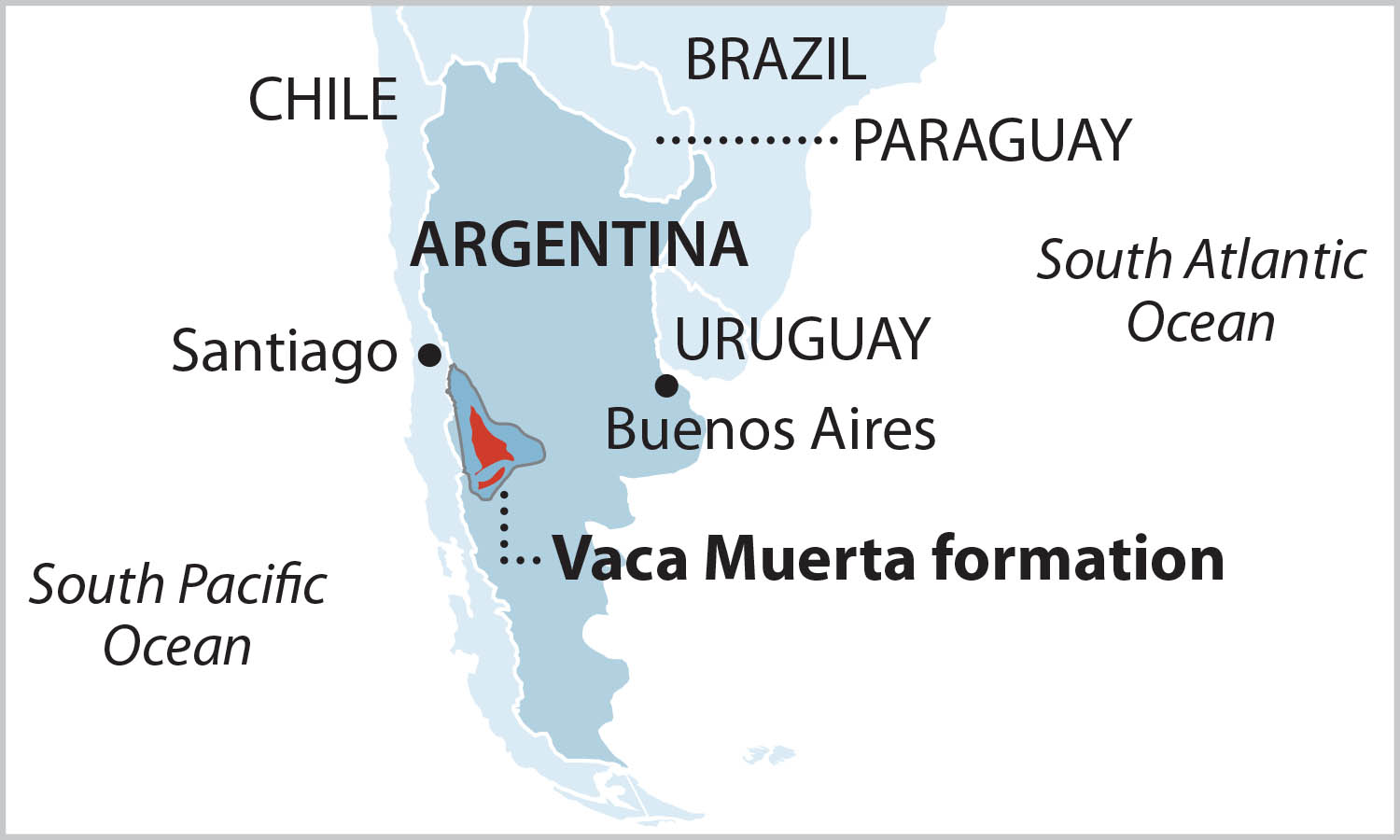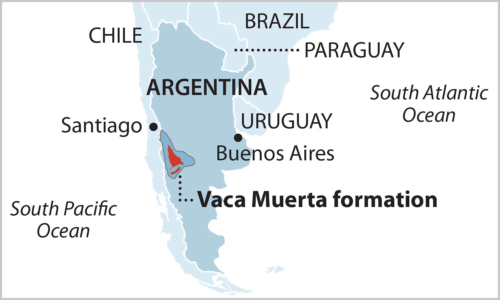IEEFA Argentina: Oil and gas production in Vaca Muerta, Patagonia awaits direction from new leadership

 December 5, 2019 (IEEFA) ‒ Efforts by the oil and gas industry to develop Vaca Muerta, Argentina’s vast shale reserves in northern Patagonia, have slowed and in many instances, come to a halt, as the industry awaits direction from the country’s incoming president.
December 5, 2019 (IEEFA) ‒ Efforts by the oil and gas industry to develop Vaca Muerta, Argentina’s vast shale reserves in northern Patagonia, have slowed and in many instances, come to a halt, as the industry awaits direction from the country’s incoming president.
Alberto Fernández, who will take office on December 10, has yet to name a new energy secretary, nor confirm who will run the state-controlled oil company, YPF,* and where he intends to take the country’s struggling energy sector.
Argentina’s foreign partners are adopting a “wait-and-see” attitude according to a briefing note released today by the Institute for Energy Economics and Financial Analysis (IEEFA).
“Rather than concentrating on oil and gas for export into an oversupplied global market like his predecessor (Mauricio Macri), the Fernández government has an opportunity to focus instead on developing low‑cost energy for Argentine domestic consumption,” said Kathy Hipple, an IEEFA financial analyst and co-author of the briefing note.
As IEEFA has pointed out previously, Argentina would do well to avoid the path followed by the U.S. fracking industry that has led to a gas glut, falling prices, and rising bankruptcies among exploration and production (E&P) companies.
The analysts recommend that Fernández move away from Macri’s 2018 Energy Plan that sought to double production and create an export market beyond Argentina’s regional partners.
Changes in subsidy levels, pipeline bottlenecks and a general oversupply of gas led many producers, such as Wintershall, Tecpetrol, and Shell, to rethink their strategy.
Some companies are divesting from Argentina altogether. For example, Schlumberger, the world’s largest oil services and equipment manufacturer, is trying to sell its investments in Argentina.
Partnering companies are increasingly speaking out publicly about their concerns over E&P in Vaca Muerta. At a conference in November organized by newspaper El Cronista in Buenos Aires, Shell and ExxonMobil executives spoke of the need for stable government policies, greater spending on infrastructure, and incentives.
Foreign partners also blame inadequate infrastructure for the slow pace of development in Vaca Muerta. Limited pipelines, railroads and roads have constrained development, as producers struggle with an oversupply of natural gas.
“To continue with the previous government’s policy would be a recipe for disaster. Hopefully, Fernández will move the economy forward and learn from past mistakes,” said Sanzillo.
*On December 6, President-elect Fernández announced his picks for several important cabinet positions including Guillermo Nielsen as president of YPF and Sergio Lanziani as Minister of Energy. IEEFA will continue to watch developments closely, especially in terms of economic and energy policy-making.
Kathy Hipple is an IEEFA financial analyst.
Tom Sanzillo is IEEFA’s director of finance.
Briefing note: Oil and Gas Production in Argentina’s Vaca Muerta Awaits Direction from New President
Media contact
Vivienne Heston, [email protected], +1 (914) 439-8921
About IEEFA
The Institute for Energy Economics and Financial Analysis conducts research and analyses on financial and economic issues related to energy and the environment. The Institute’s mission is to accelerate the transition to a diverse, sustainable and profitable energy economy. www.ieefa.org











